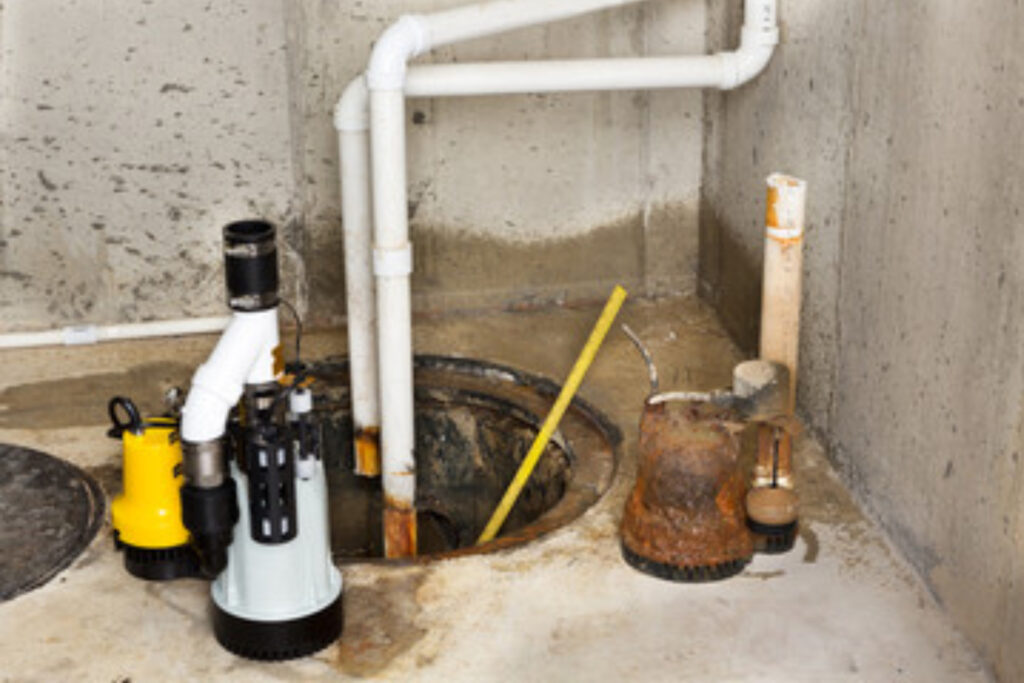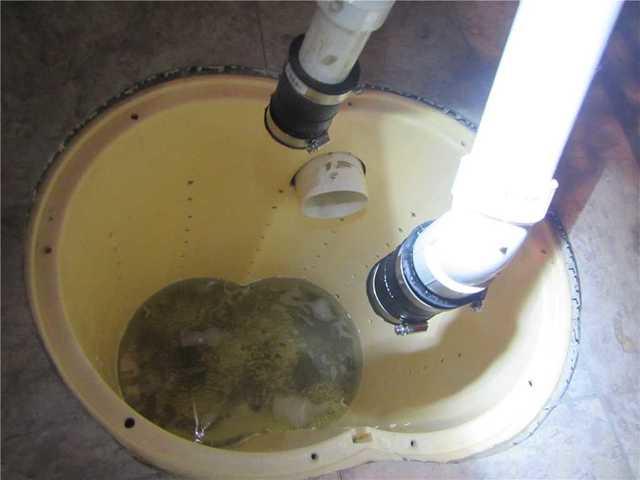Clear Tips for Cleaning Your Sump Pump
Clear Tips for Cleaning Your Sump Pump
Blog Article
The article in the next paragraphs involving Cleaning & Maintenance Tips for Your Home's Sump Pump is quite enlightening. You should investigate it.

Sump pumps are important parts in several homes, especially in areas prone to flooding or excessive moisture. They help avoid water damage by effectively eliminating excess water from basements or crawl spaces. However, like any other appliance, sump pumps call for normal upkeep to ensure they function effectively when needed the most. Cleansing your sump pump is a crucial part of its maintenance, and comprehending exactly how to do it appropriately can conserve you from expensive repair services and potential catastrophes.
Intro
Preserving a clean sump pump is essential for its appropriate functioning and long life. Neglecting this crucial task can lead to clogs, breakdowns, and inevitably, water damage to your residential or commercial property. For that reason, discovering exactly how to clean up a sump pump is important for property owners that rely on these devices to keep their basements dry and safeguarded.
Comprehending the Sump Pump
Before diving into the cleaning procedure, it's vital to have a basic understanding of exactly how a sump pump works. Typically installed in a pit or container below the basement floor, a sump pump contains several essential elements, consisting of a pump, a float button, and a discharge pipeline. When water gathers in the pit, the float button turns on the pump, which then pumps the water out via the discharge pipeline, far from the building's structure.
Indications of a Dirty Sump Pump
Knowing when your sump pump requires cleaning is essential for protecting against potential malfunctions. Some usual indications that indicate an unclean sump pump consist of strange sounds throughout operation, lowered water circulation, and noticeable debris in the pit. If you see any one of these symptoms, it's important to clean your sump pump promptly to avoid any kind of additional problems.
Getting ready for Cleaning
Before you begin cleaning your sump pump, it's important to take some safety and security precautions. Beginning by turning off the power to the pump to avoid any electrical accidents. Additionally, wear ideal protective equipment, such as gloves and safety glasses, to secure yourself from dust, particles, and potential virus.
Detailed Overview to Cleaning Up a Sump Pump
Shutting Off the Power
Begin by detaching the power supply to the sump pump to avoid any type of crashes while cleaning.
Getting Rid Of Debris and Dirt
Make use of a container or an inside story to eliminate any type of visible debris, dust, or debris from the sump pit. Dispose of the particles correctly to prevent it from obstructing the pump or the discharge pipeline.
Cleaning up the Pump and Float Switch Over
Once the pit is clear of particles, thoroughly get rid of the pump from the pit. Check the pump and the float button for any indications of damage or wear. Make use of a soft brush or cloth to clean the surfaces and remove any kind of accumulated gunk.
Flushing the System
After cleaning the pump and float switch, flush the sump pit with clean water to eliminate any kind of continuing to be dirt or sediment. This will assist make sure that the pump operates efficiently and effectively.
Looking For Proper Performance
Prior to re-installing the pump, do a quick examination to make certain that the float button activates the pump appropriately. Pour some water into the sump pit and observe the pump's operation. If everything is functioning appropriately, you can reassemble the pump and reconnect the power supply.
Upkeep Tips to Maintain Your Sump Pump Clean
Along with regular cleaning, there are several maintenance ideas you can follow to maintain your sump pump in ideal condition:
Final thought
Cleansing your sump pump is a crucial facet of its maintenance and ensures that it runs successfully when you need it one of the most. By following the steps described in this guide and incorporating normal maintenance into your routine, you can expand the life-span of your sump pump and protect your home from water damage.
6 STEPS ON HOW TO CLEAN A SUMP PUMP PROPERLY
UNDERSTANDING SUMP PUMPS
Your sump pump plays a crucial role in protecting your home by managing and removing excess water. It primarily functions as a “shield”, guarding your basement against the damaging effects of water accumulation. The pump is housed in a sump pit in the lowest part of your basement, and its job is to pump out any water that collects there.
During heavy rainfalls or when snow melts rapidly, water can infiltrate your basement, posing potential risks like flooding, structural damage, and harmful mold growth. Here, the sump pump springs into action, pumping out the intruding water and directing it away from your home.
SAFETY FIRST
Before cleaning, remember to prioritize safety. Disconnect the sump pump from the power source to prevent any accidental electric shocks. Also, wear sturdy gloves to protect your hands from any sharp or dirty components within the pump.
REMOVE THE SUMP PUMP
After ensuring your safety, the next step is to remove the sump pump from its pit. Doing this might require careful maneuvering as you don’t want to damage any pump components. Once removed, clean the sump pit to remove any accumulated debris or sludge.
INSPECT THE PUMP
Inspect the pump for any visible signs of wear or damage. Check the power cord, float switch, and impeller housing. If any components look worn out or damaged, consider replacing them to ensure optimal performance.
CLEAN THE PUMP
Thoroughly clean the pump with warm, soapy water. Make sure to rid it of any dirt, gravel, or other debris that might impede its performance. You can use a toothbrush to clean the small, hard-to-reach parts of the pump.
REINSTALL THE SUMP PUMP
Reinstall the pump into the sump pit Make sure it’s positioned correctly to remove the water effectively Once it’s back in place, reconnect it to the power source TEST THE PUMP
Finally, pour some water into the pit to ensure the pump works correctly. It should start automatically and begin pumping out the water; if it doesn’t, check the power source and the positioning of the pump.
Remember, while cleaning your sump pump is an essential part of home maintenance, hiring a professional plumber for a thorough inspection and cleaning at least once a year is also important. This will ensure that your pump is in optimal condition, ready to protect your home from potential water damage.
BEST PRACTICES FOR CLEANING SUMP PUMP DISCHARGE PIPES
Regular Inspection: Regularly inspect your discharge pipes, especially during heavy rainfall or snowmelt periods. Look for any signs of blockage or damage. Early detection of problems can prevent serious issues down the line. Periodic Cleaning: Over time, sediment and debris can accumulate in the discharge pipes, impeding the flow of water. Regular cleaning helps keep the pipes clear and functioning efficiently. You can use a high-pressure water jet to effectively clean the pipes. Insulation During Winter: In colder climates, discharge pipes can freeze, blocking the outflow of water. Protect your discharge pipes from freezing temperatures by insulating them with foam pipe insulation. This will ensure the sump pump can continue to discharge water even in freezing conditions. Proper Positioning: The discharge pipe should be positioned to direct water away from your home’s foundation. Improper positioning can lead to water seeping back into the basement. Ensure the pipe is long enough and angled correctly. Installation of a Check Valve: A check valve prevents water from flowing back into your sump pit after the pump has pushed it out. Installing a check valve helps maintain the efficiency of your sump pump and reduces the risk of flooding. Minimize Pipe Turns: Every curve or turn in the discharge pipe can decrease the efficiency of water flow. By minimizing turns and bends in your discharge pipe, you can increase the efficiency of your sump pump. https://www.fullspeedplumbing.com/how-to-clean-a-sump-pump-properly9999/

Hopefully you liked our piece on Keep Your Sump Pump Clean, It'll Keep You Dry. Many thanks for taking the time to read through our posting. Be sure to take a moment to share this content if you enjoyed reading it. Bless you for your time. Revisit us soon.
View More Report this page